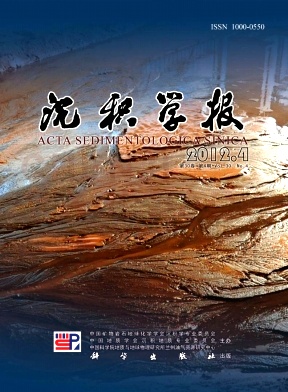Analysis of Late Triassic Sedimentary Provenance in the North of Helan Mountain
- Publish Date: 2012-08-10
-
Key words:
- Late Triassic, provenance analysis /
- conglomerate component /
- rare earth element /
- northwest provenance, metamorphic rocks /
Abstract: Based on the sedimentary and tectonic background of the north of Helan Mountains, the paper discussed the features of the provenance through comprehensive analysis of the conglomerate component and gravel features, paleocurrent direction, rare earth element, zircon dating and sedimentary trending. The conglomerate at the bottom of Upper Triassic mainly distributed in four different areas of Taerlin, Beisi, Shuimogou and Rujigou in Helan Mountain shows that the gravels were composed of quartzite, quartz sandstone, carbonate and granite. Paleocurrent data from various researchers reveal that the main current direction was northwest:wards which meant the river flowed from the northwest to the southeast in Triassic. And there was a successive paleocurrent direction throughout the Triassic. The result is also closely consistent to the paleocurrent in Shigouyi and Ciyaobao area in the west margin of Ordos Basin and they all indicate that there was a common provenance from the northwest. The rare earth element in sandstone can also give certain clues of the provenance. Nineteen samples were chosen to detect the quantity of rare elements from the Upper Triassic, PreCambrian and Cambrian to Middle Triassic. The paper also collects other rare element data of the gneiss and granulite of Helanshan Group in the northwest margin of Helan Mountain and of the granite formed during Hercynian to Indosinian period to the west of Helan Mountains. This pattern is almost the same as that in strata from Cambrian to MidTriassic and PreCambrian as well as the granite formed between Hercynian and Indosinian period, which supports that the provenance is from the corresponding rocks formed earlier than Late Triassic. The age peaks of the UPb dating of zircon show the provenance of Late Triassic is related to the metamorphic rock in Archean and Paleoproterozoic and also the magnetic rock during Hercynian and Indosinian period.Meanwhile, sedimentary environment analysis indicates that the gravels become smaller and sedimentary facies turns from alluvial fan, fluvial to lake from the west to the east of Helan Mountains. This proves that the Yinchuan Paleouplift did not appear in Late Triassic. Therefore the eastward provenance does not exist in Late Triassic of Helan Mountains.The paleocurrent data, heavy minerals and zircon UPb dating in Shigouyi area of the west of Ordos Basin suggest a similar provenance with Helan Mountains in direction and rock feature in Late Triassic. The fission track analysis shows that the uplift age of the whole Helan Mountains is later than Late Triassic. Two zircon fission track ages are 252Ma and 253Ma, older than the strata (MidJurassic and Late Triassic) from which they were chosen, which might propose that the provenance area had gone through the structure and thermal event and had been uplift in the late of Permian to supply major sedimentary source for Mesozoic.It is concluded that there is no east provenance and main northwest provenance in the north part of Helan Mountains. The provenance is predominant the metamorphic rocks (such as Helan Group and Alxa Group) and magmatic rocks from Alxa block and Xing'anling Mongolian Orogenic Belt in Archean and Paleoproterozoic. Several sedimentary and magmatic rocks rolled into the old orogenic belt partly provide the Late Triassic provenance. Meanwhile there are multiple provenances with various tectonic reformations and restoration of the model of the provenance evolution is significant to the evolution of the periphery orogenic belt and blocks.
| Citation: | Analysis of Late Triassic Sedimentary Provenance in the North of Helan Mountain[J]. Acta Sedimentologica Sinica, 2012, 30(4): 654-660. |






 DownLoad:
DownLoad: